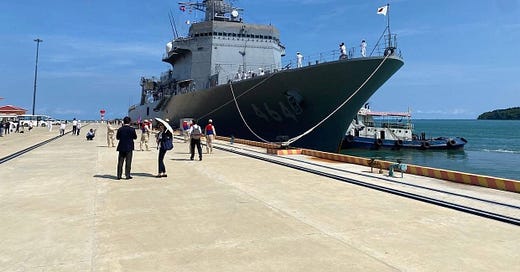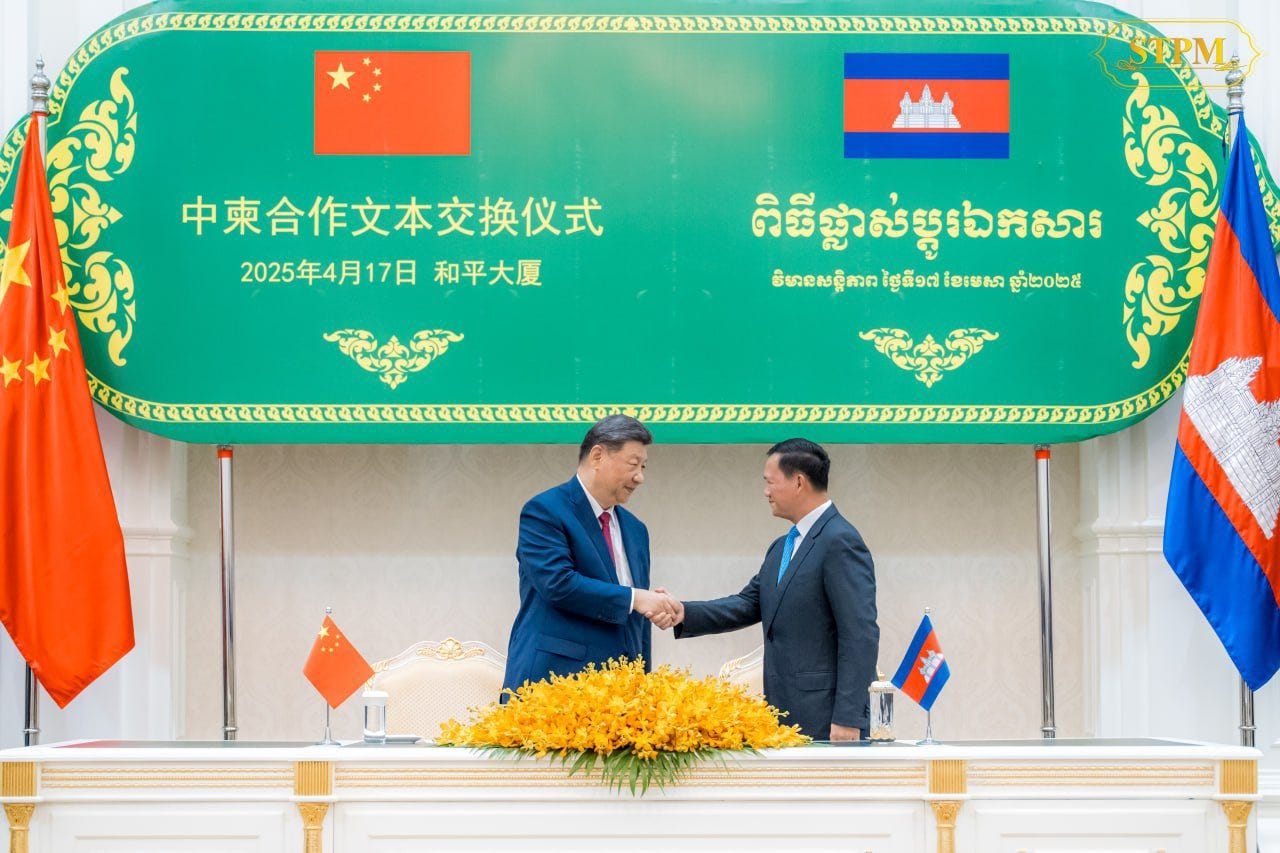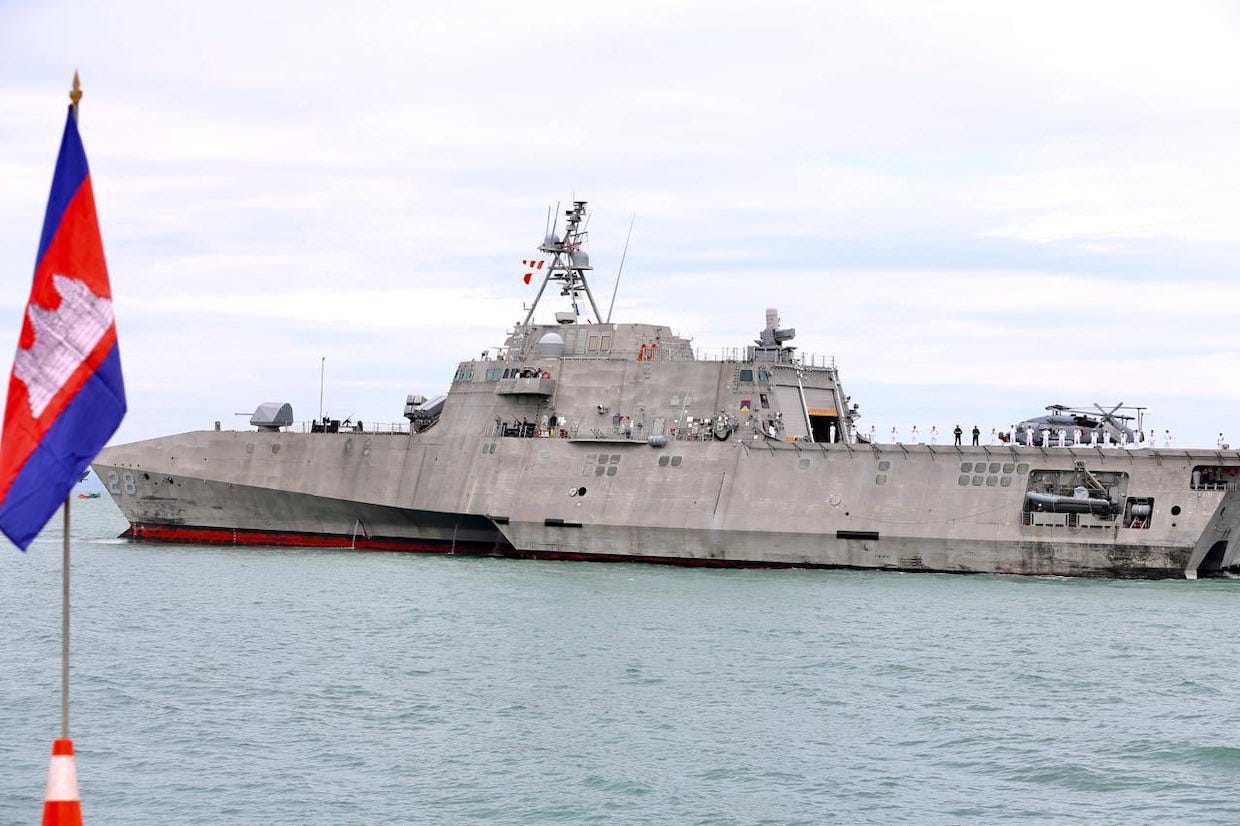All are welcome at Southeast Asia’s newest naval base
After years of speculation about Chinese-funded renovations, Cambodia says its Ream naval base is open to "all friendly countries."
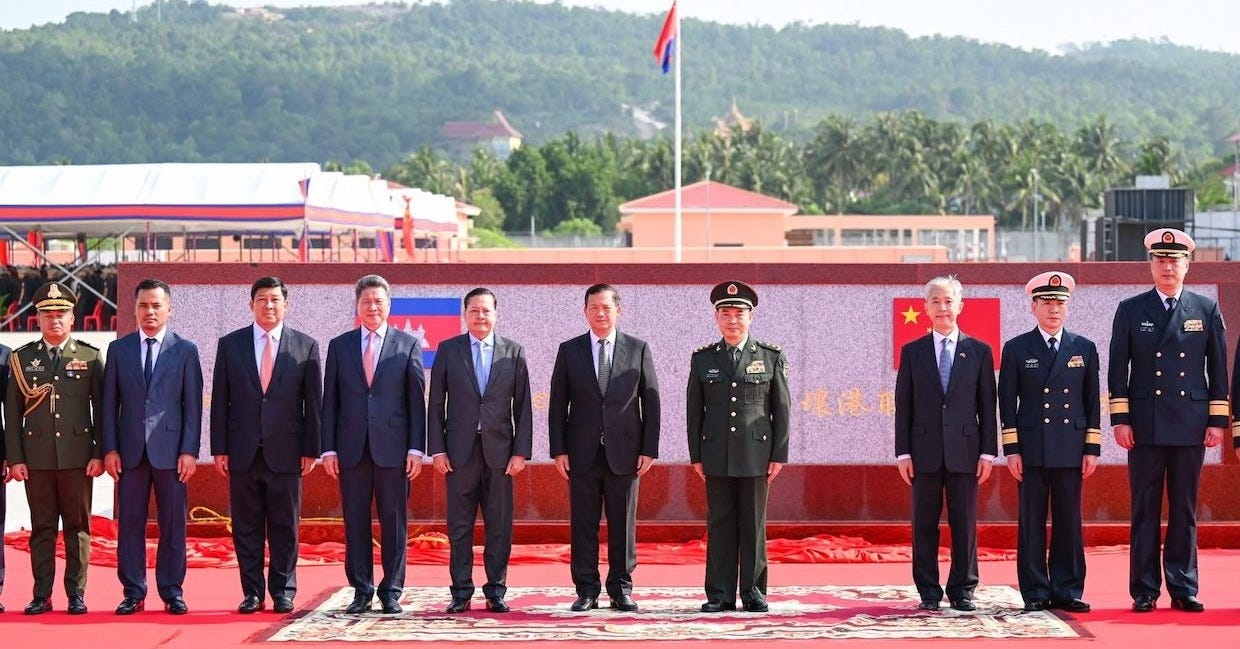
Cambodia’s Ream naval base reopened on April 5 after years of renovations.
China funded the renovation, fueling speculation that it would have control of part of the base.
Cambodia denies that and says foreign forces are welcome to visit Ream.
BANGKOK — In early April, Cambodia reopened Ream naval base, its largest naval base and its only one with direct access to the sea, after years of Chinese-funded renovations to expand and modernize the facility.
Even before they broke ground on the renovations in 2022, there was widespread speculation about the Chinese military’s presence there. Cambodian officials denied Ream would host a facility for exclusive Chinese use, which Prime Minister Hun Manet emphasized during the reopening ceremony on April 5, saying “all friendly countries” would be welcome to visit and train there.
To underscore that openness, Ream has already hosted two Japanese warships as the first foreign visitors, and more visits are planned. That hospitality is unlikely to allay suspicions among Cambodia’s neighbors or the US and its allies, who have watched warily as China has expanded its security ties and military activity in Southeast Asia.
'New model of cooperation’
US concerns about Ream burst into the open in 2019, when The Wall Street Journal, citing “US and allied officials,” reported that Cambodia had made a secret pact giving China “exclusive rights to part of” the base. Despite Cambodia’s denials, US fears persisted in 2020 and 2021, when satellite photos showed US-funded facilities at the base being demolished and US officials were not allowed full access to the base.
Cambodia and China broke ground on the renovations in June 2022 with a ceremony where a sign said the project was funded by “grant aid from the People’s Republic of China.” A nearly 1,000-foot pier was built in the first half of 2023, and suspicions about China’s future presence there deepened when two Chinese navy corvettes tied up at the pier in late 2023 and remained there for months.
China has agreed to give Cambodia’s navy two corvettes, and Cambodian officials said the ships were there for training. The corvettes, along with several other Chinese warships, took part in the two countries’ Golden Dragon exercise in May 2024, the largest edition since the drill was first held in 2016, and continued training with Cambodian forces during the second half of the year.
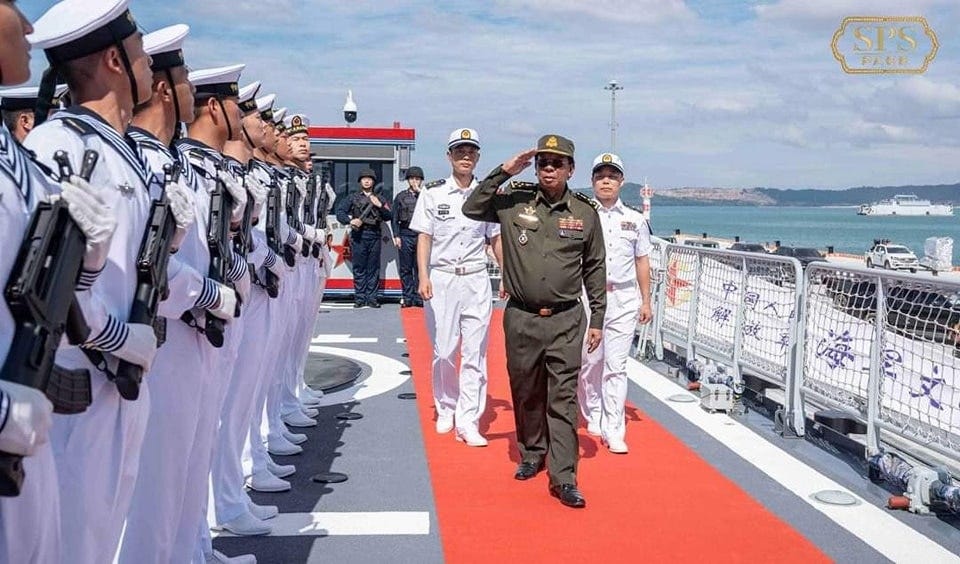
When the facility, called the Cambodia-China Ream Joint Logistics and Training Center, reopened on April 5, officials stressed its value for Cambodia’s military and the countries’ relations. “This achievement not only reflects the fruitful outcome of cooperation between the two nations, but also enhances Cambodia's national defense capabilities,” Prime Minister Hun Manet said in a speech. In a statement, China’s Ministry of National Defense said the base would support joint operations on counterterrorism, disaster prevention and relief, and humanitarian assistance.
Cambodia’s national press agency said that after three years of work, the base now covers nearly 8.5 million square feet and has a military port, a 5,000-tonne dry dock, an 1,000-tonne slipway, office buildings, dormitories, and “various logistics infrastructure.” The improvements mean the base can accommodate ships displacing up to 20,000 tonnes.
The Chinese ministry also said, “Necessary personnel from both countries will be stationed at the site to ensure smooth operations,” according to Global Times, a state media outlet, which cited a military affairs expert as saying the facility represents “a new model of cooperation” between the Chinese and foreign militaries, “with both sides jointly building, utilizing, and maintaining the center.”
Local need, regional impact
For Cambodia, Ream’s renovation is part of efforts to improve its military, particularly its navy, which has small, aging ships and limited ability to address challenges in the Gulf of Thailand, including transnational crime and illegal fishing. The effort also reflects concerns about Vietnam and Thailand, Cambodia’s larger and at-times hostile neighbors. Tensions with Thailand, with which Cambodia has active border disputes on land and at sea, have flared in recent months.
The renovations are meant to boost the Cambodia’s ability to monitor nearby airspace and waters, better coordinate operations, and do more extensive repairs on larger ships. According to a recent report by Australia’s Lowy Institute, construction at Ream in mid-2024 included large dockyards for warships and commercial vessels, a new command-and-control center, air-defense systems and air and maritime radars, and medical facilities. As of June, only the dredging, which deepened the water around the pier from about 6 to 10 feet to about 26 to 36 feet, was completed, the report said.
At the ceremony, Hun defended the upgrades: “That Cambodia — a country that had been under war, especially our navy, lagging behind others — wanted to accelerate the construction/enhancement of our military capabilities, having modern equipment, information-gathering capability, and modern training equipment and facility, what wrong could that be?”
Hun also asked Lt. Gen. Cao Qingfeng, a Chinese Central Military Commission official who spoke at the ceremony, to continue helping improve Cambodia’s ability “to defend our islands/coasts, especially the training and equipping of coastal defense weapons.”
According to Rahman Yaacob, author of the Lowy report, the upgraded Ream still has limited military value to China. The water is too shallow for its largest warships, like aircraft carriers, and the base’s modest size and location on the Gulf of Thailand mean it likely offers little utility for projecting power in the South China Sea, where China already has several air and naval bases. But the US and other countries worry about China having another overseas military outpost, particularly one that could help sustain its forces and monitor activity near the South China Sea and the straits connecting the Pacific and Indian oceans.
While the upgraded Ream will boost Cambodia’s military more than China’s, its new features could benefit the Chinese military and do worry the neighbors. New sensors at the base could aid intelligence-gathering directed at nearby countries. In an email, Yaacob said “my impression is that the Vietnamese are concerned about [China’s military] being able to monitor air traffic on the southern parts of Vietnam, up to Ho Chi Minh, through the air radar or air defence system set up near Ream.”
Beef and cabbage
Beyond military presence, China’s investment in Ream has come to symbolize its growing influence in Cambodia and its inroads across the region. Beijing has long been Phnom Penh’s top economic partner, and Cambodia has supported China diplomatically. The countries have also expanded their security ties, at times at the US’s expense — they launched the Golden Dragon exercise around the same time as the government of Hun Sen, Hun Manet’s father, suspended a US-Cambodian military exercise held since 2010.
Since taking over as prime minister in late 2023, however, Hun Manet has sought to effect a more balanced foreign policy, nurturing relations with more countries. US and Cambodian defense officials met several times in 2024, culminating in December with the visit of a US warship, the first in seven years, to a port 30 miles west of Ream. (Cambodia has also asked to resume its military exercise with the US.)
The government has extended that openness to Ream. “Starting today, Cambodia welcomes all friendly countries to come and train together at the Ream naval base. We have nothing to hide,” Hun Manet said at the reopening in one of several comments that emphasized a willingness to host foreign forces.
That hospitality was on display when two Japanese warships arrived at Ream on April 19 for the first visit by another military. (Hun Sen announced the visit in December.) Another Chinese warship has reportedly visited the base since then, but so has a Vietnamese navy ship, and the younger Hun has said Russian, Indian, and possibly US ships are expected to visit in the future.
Cambodia’s diplomatic balancing act may get harder. Southeast Asian countries face some of the steepest tariffs announced by President Donald Trump in early April — Cambodia, at 49%, received one of the highest. Those tariffs have been paused, but countries in the region are scrambling to negotiate lower rates. Beijing has tried to capitalize on the disruption, with President Xi Jinping visiting Vietnam, Malaysia, and Cambodia in mid-April to promote China as a more reliable partner. China has also warned other countries against making tariff deals that harm its interests.
The turmoil has sparked more discussion of whether Southeast Asia could tilt toward one of the superpowers. Cambodia, for its part, feels no need to pick. “They say that if you take America, you will have beef. If you take China, you will get cabbage,” Hun said on April 21. “We choose both. No one has come to oppress us or to block the right to either choose only vegetables or only beef. We choose both because we care about our health. Our health is the economy and the livelihood of Cambodia.”


